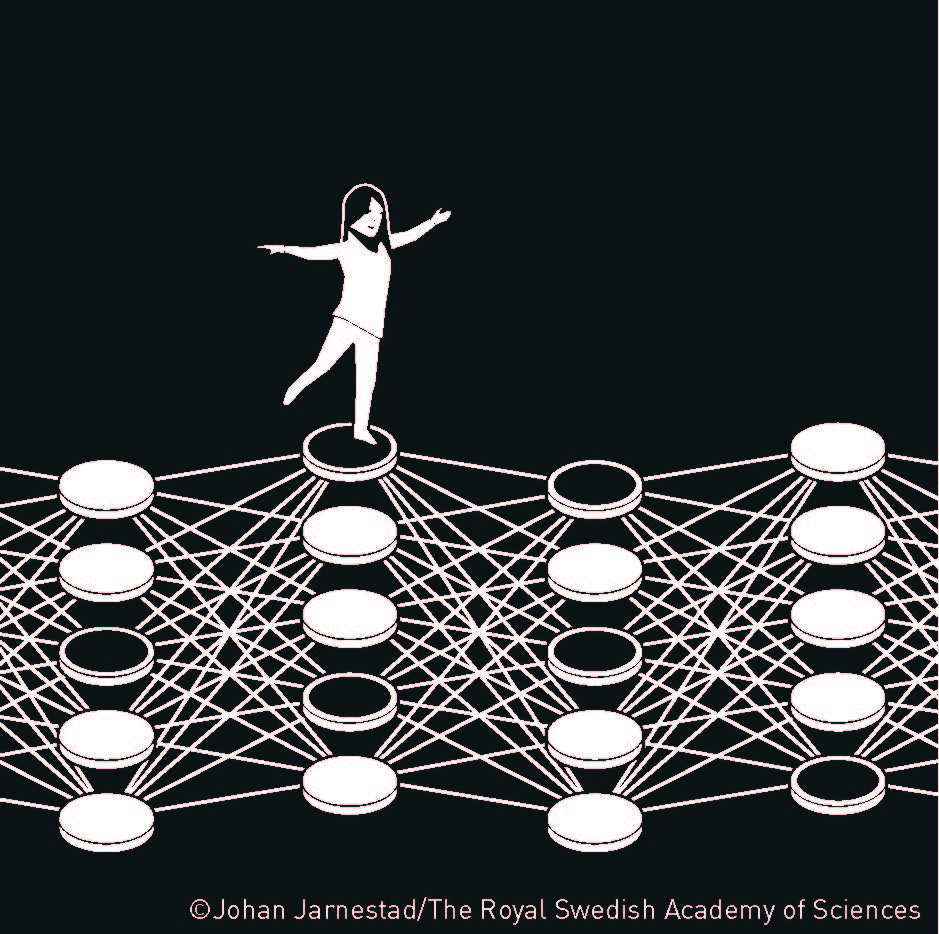
Nobel Prize in physics: honouring physicists’ contributions to AI development
On 8 October, the Committee of the Royal Swedish Academy of Sciences announced the winners of the Nobel Prize in Physics for 2024. John Hopfield of Princeton University and Geoffrey Hinton of the University of Toronto were awarded ‘for foundational discoveries and inventions that enable machine learning with artificial neural networks’.
– At first, the choice of the Nobel committee came as a big surprise to me, because from the point of view of physics, the Hopfield and Hinton models do not seem to be crucial for its development – comments dr hab. Krzysztof Graczyk, prof. UWr, Vice-Dean of the UWr Faculty of Physics and Astronomy. – However, given the technological developments and the development of artificial intelligence, their contribution is immense. Therefore, after a moment’s reflection, I believe that the award is well deserved – assesses the scientist.
The Nobel committee’s decision appears to honour the tremendous progress in the development of artificial intelligence. – The Nobel committee, with its choice, highlights the contribution of physicists to the development of artificial intelligence methods. On the other hand, physicists have been using and studying artificial neural networks since they emerged. Indeed, from a physics point of view, a neural network is a complex system. Today, deep neural networks have become one of the standard tools used in the study of physical systems – explains vice-dean.
John Hopfield is a physicist with a wide range of interests. His main scientific activity focused on condensed phase physics. It should be noted that his scientific interests went well beyond physics. Among other things, he was involved in research at the frontiers of neuroscience. His best-known achievement, for which he was honoured with a Nobel Prize, is a model of associative (associative) memory, called the Hofpield model. – This is a very simple model of interconnected neurons to ‘remember’ a number of patterns (e.g. black and white photographs). The Hopfield model was motivated by physical systems describing magnetics. This allows us to describe the network in a similar way to a physical system. We can, for example, characterise a system by giving its energy, and using the methods of statistical physics, we can obtain information about the properties of the model such as its capacity – explains prof. Graczyk. Undoubtedly, Hopfield’s work stimulated the development of neural networks. Hopfield himself promoted many scientists working on artificial intelligence, he adds.The Nobel committee, with its choice, underlines the contribution of physicists to the development of artificial intelligence methods. On the other hand, physicists have been using and studying artificial neural networks since they emerged. Indeed, from a physics point of view, a neural network is a complex system. Today, deep neural networks have become one of the standard tools used in the study of physical systems – explains vice-dean.
Geoffrey Hinton is regarded as one of the godfathers of deep learning, deep neural networks. His contribution to the development of artificial intelligence is immense. He drew inspiration in his early research from neuroscience, psychology as well as physics.
Professor Graczyk describes what the laureates’ discoveries were based on: – The Hopfield model is a beautiful mathematical creation with rather limited practical applications. Geoffrey Hinton, proposed its extension, the Boltzmann machine, which has much broader practical applications, making it possible, for example, to classify the content of photographs. The proposed model is still based on methods known in statistical physics. The lattice parameters are chosen so that the energy for this system is at a global minimum, therefore at equilibrium. The work on Boltzmann machines was an important step in obtaining deep neural networks. Boltzmann machines make it possible to extract features from guided data, just as deep neural networks do.
The decision of the Nobel committee shows how important the topic of artificial intelligence is in modern science and how interdisciplinary it is. The AI conference is organised on 18 October at the UWr Faculty of Mathematics and Computer Science, devoted to applications of artificial intelligence in various fields of science, fits perfectly with the theme of this year’s Nobel Prize. The event has the potential to become the nucleus of interdisciplinary cooperation at the University of Wrocław in the development and application of artificial intelligence methods.
Complied by Ewelina Kośmider
Date of publication: 9.10.2024



